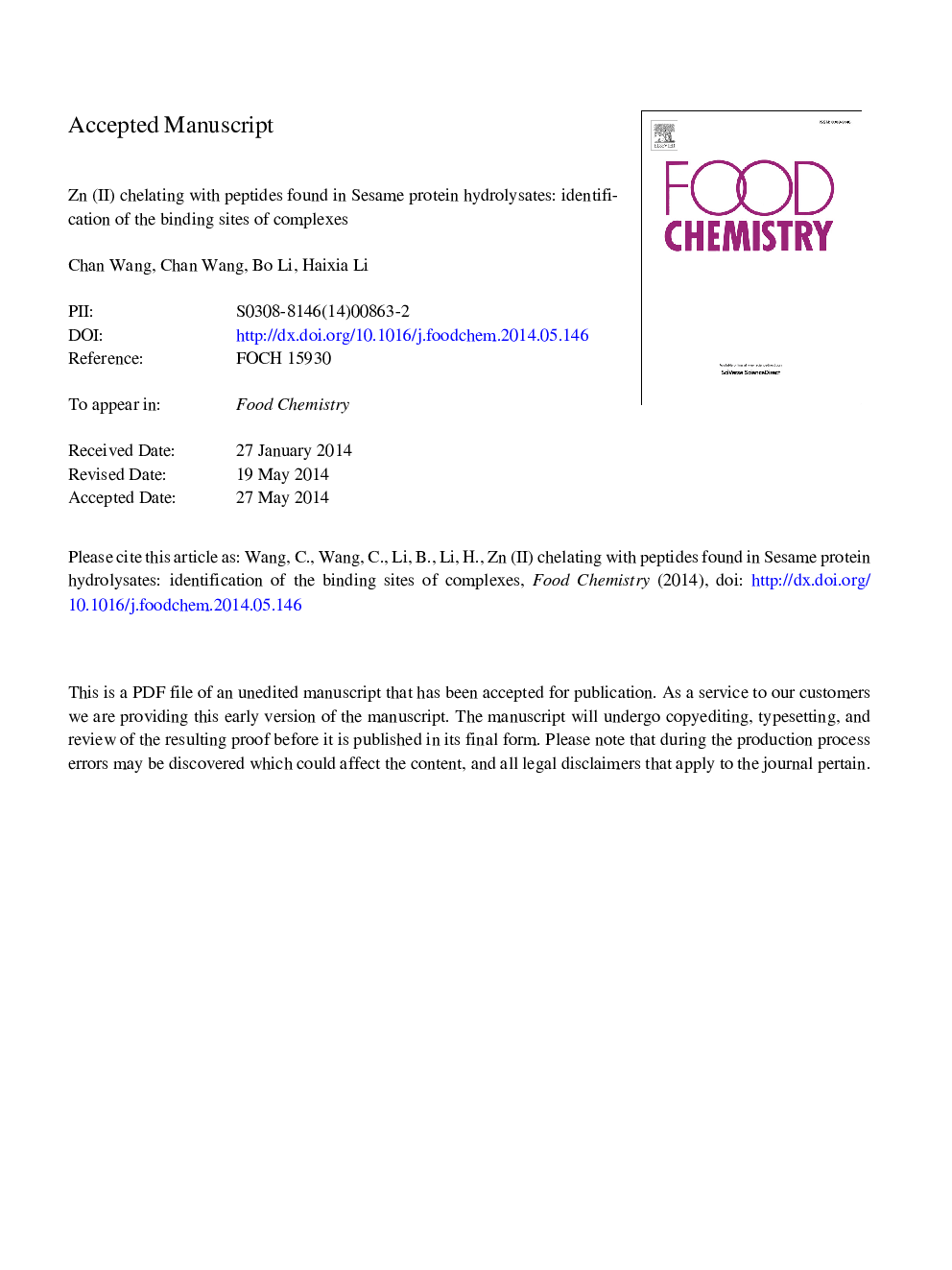| Article ID | Journal | Published Year | Pages | File Type |
|---|---|---|---|---|
| 7596191 | Food Chemistry | 2014 | 27 Pages |
Abstract
Two metal-chelating peptides identified from sesame protein hydrolysates, Ser-Met (SM) and Asn-Cys-Ser (NCS) were chemically synthesized in order to study zinc-peptide complexes. The stability constants of two peptides and their zinc complexations were measured by pH-potentiometric techniques, and the molecular masses of the Zn-peptide complexes were determined by electrospray ionization mass spectrometry. The structures of the complexes were studied by infrared spectroscopy and quantum chemistry and possible conformations of the Zn-peptide complexes were determined by molecular modeling to obtain direct insights into the molecular mechanism of Zn2+ chelation with peptides. The results confirmed that the zinc ion-to-ligand ratio is 1:1 for the two peptides and that water is involved in the formation of the complexes. Among the functional groups of SM and NCS, the carboxyl, hydroxyl, and sulfhydryl groups showed the strongest bonding abilities with Zn2+ and the carbonyl group of the peptide bond and water (O) regularly participate in coordination by weaker interactions with Zn2+.
Keywords
Related Topics
Physical Sciences and Engineering
Chemistry
Analytical Chemistry
Authors
Chan Wang, Chan Wang, Bo Li, Haixia Li,
